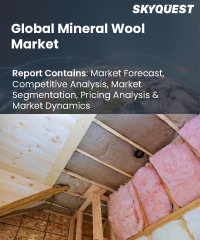
Product ID: SQMIG15P2009

Report ID:
SQMIG15P2009 |
Region:
Global |
Published Date: February, 2024
Pages:
157
|
Tables:
62 |
Figures:
75
Mineral Wool Market Drivers
Sustainability and Energy Efficiency Demands
Urbanization and Infrastructure Development
Mineral Wool Market Restraints
Competition from Alternative Materials
Fluctuating Raw Material Costs
Our industry expert will work with you to provide you with customized data in a short amount of time.
REQUEST FREE CUSTOMIZATIONWant to customize this report? This report can be personalized according to your needs. Our analysts and industry experts will work directly with you to understand your requirements and provide you with customized data in a short amount of time. We offer $1000 worth of FREE customization at the time of purchase.

Product ID: SQMIG15P2009